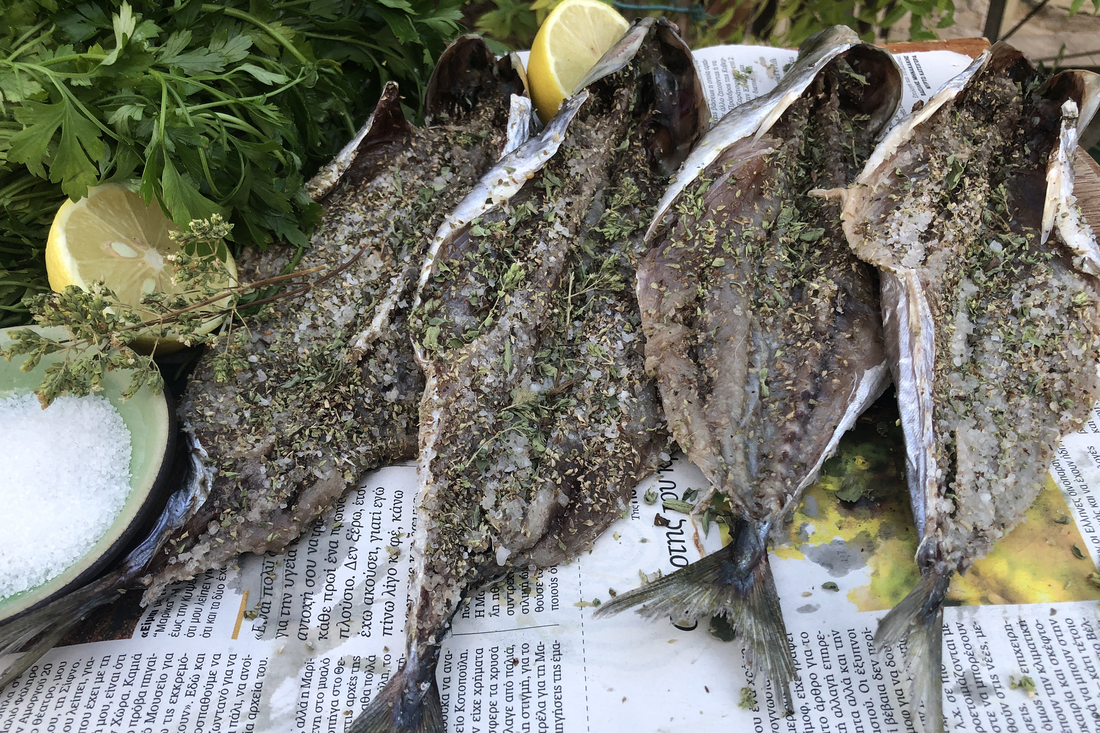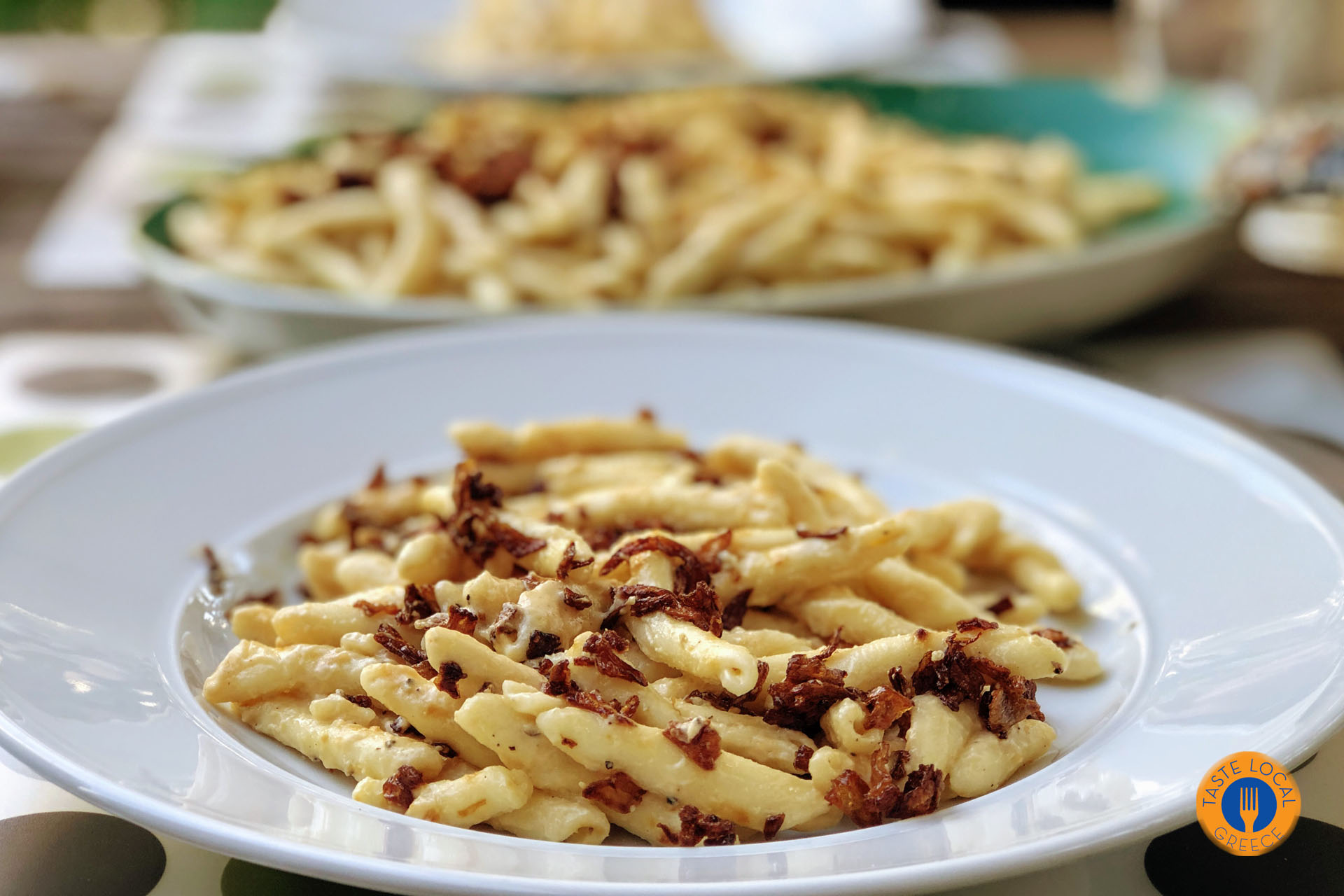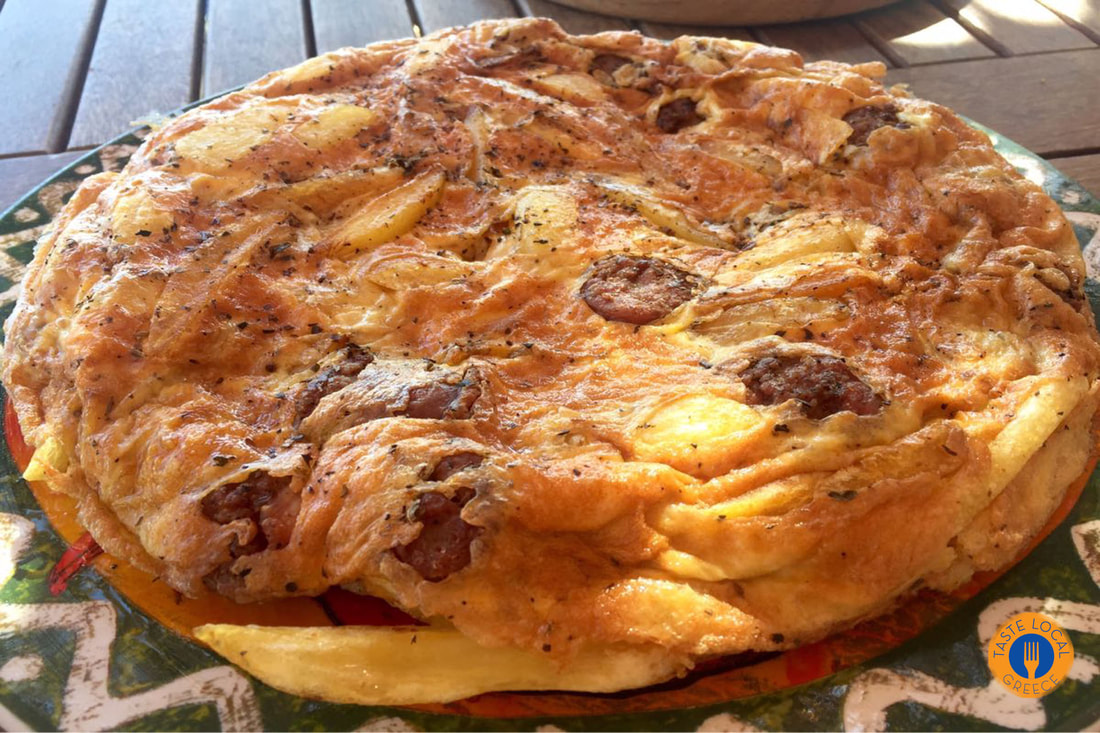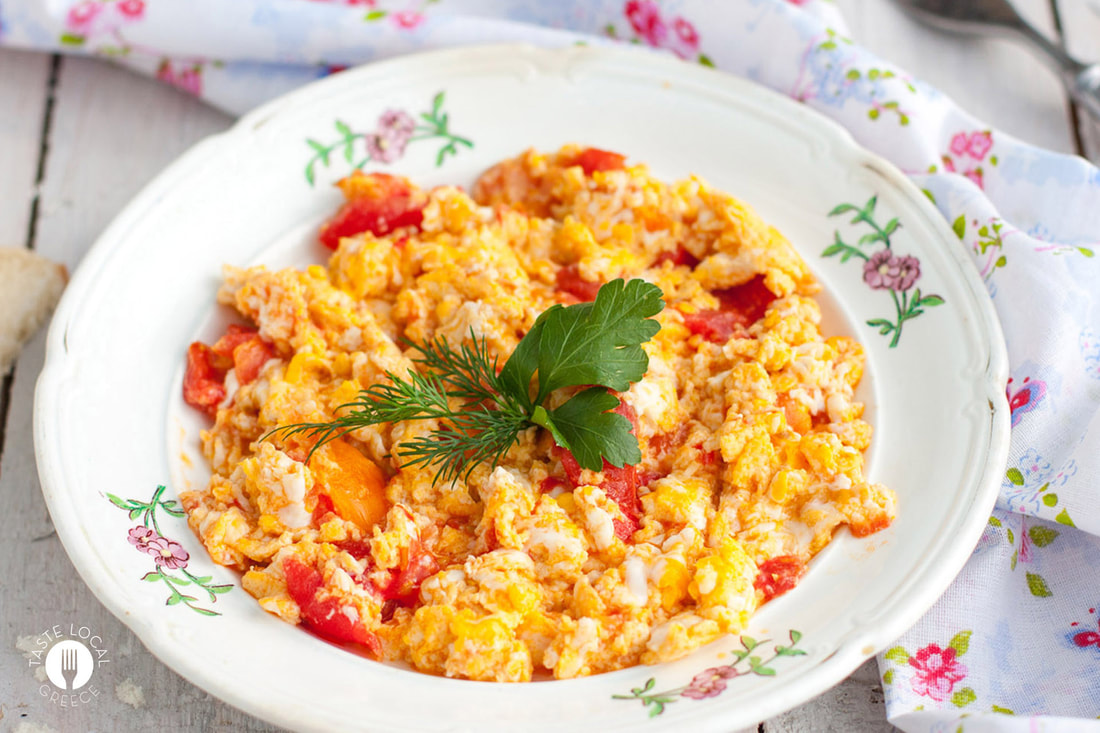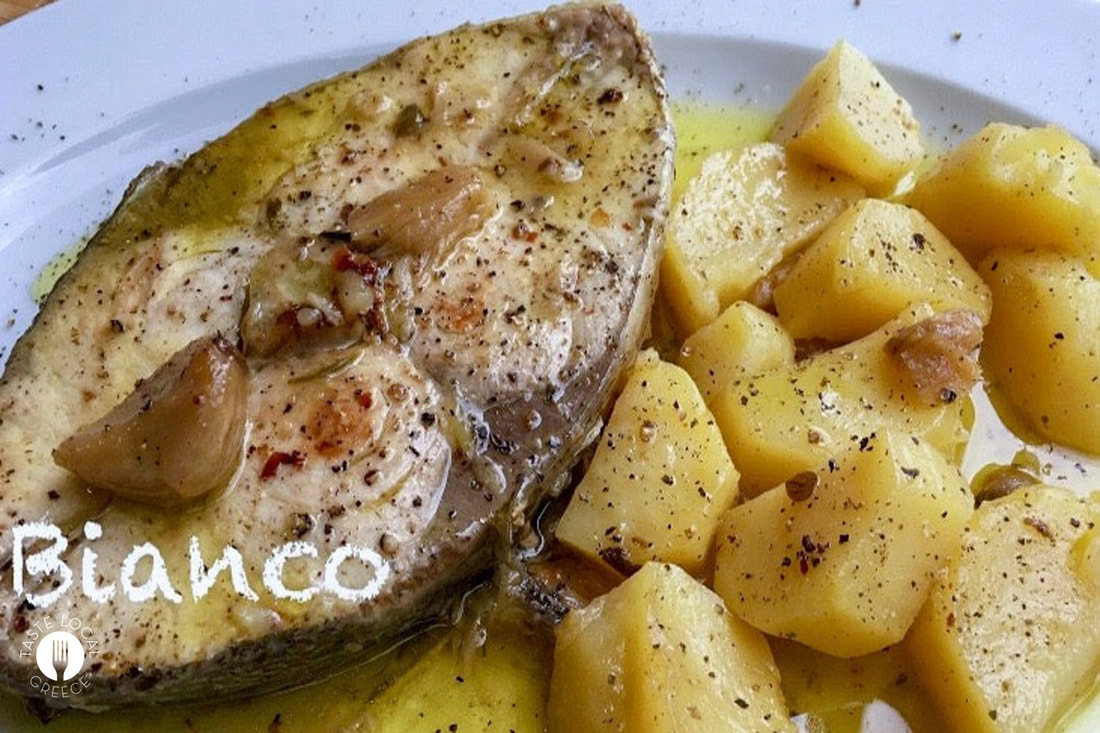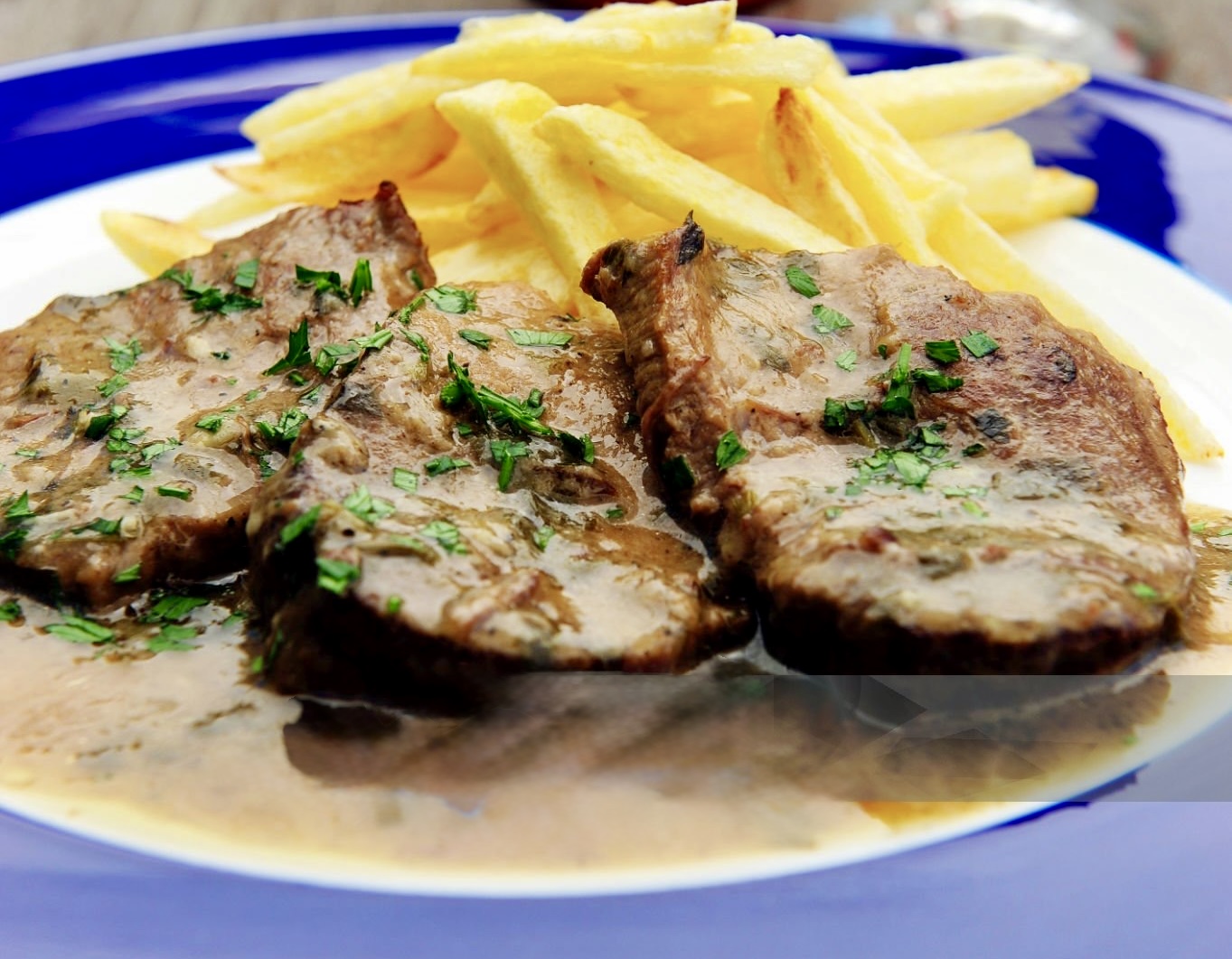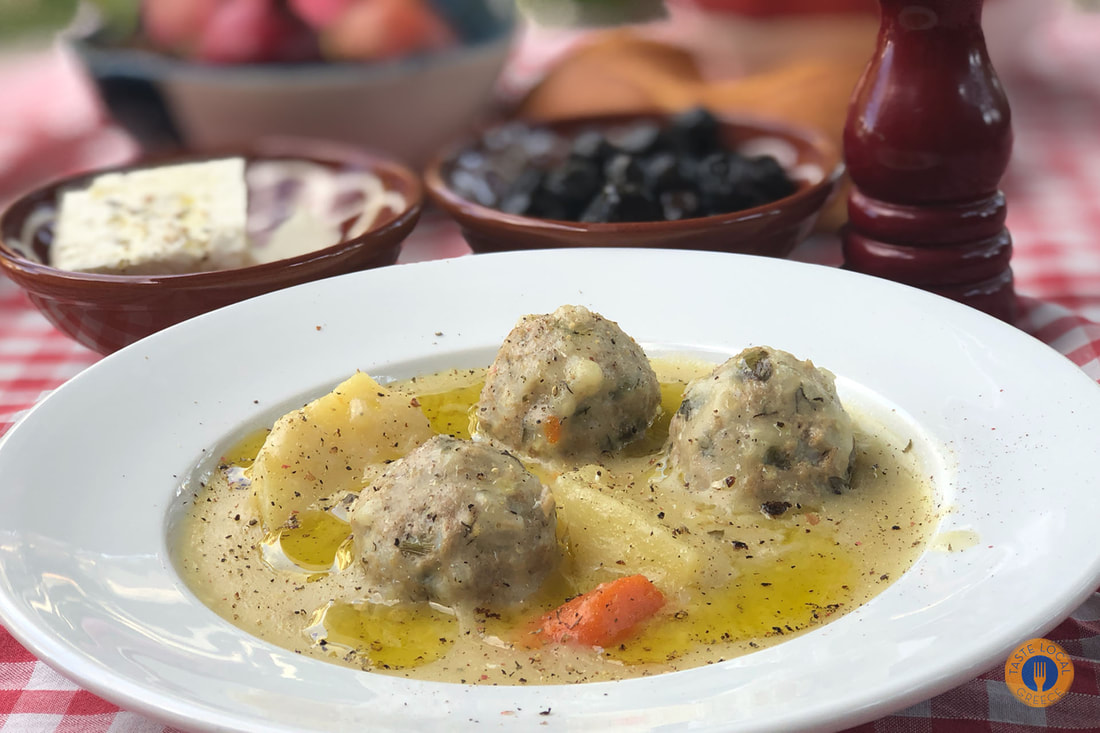Gouna, the traditional Parian fish meze, always reminded me of my best years in Paros.
When I was a child in Parikia and I sat next to my father who was drinking his soumas with gouna meze…
Now lately I have been into eating fish…
Sea bass and sea bream, both pelagic and farmed, are now very often on my table and the main reason is my friendship with Kostas the fisherman…
The story
A few years ago, while I was having my little tsipouro at the small tsipouradiko in Nea Ionia — you know the one, I’m talking about “Agora the tsipouro fish tavern” — that’s where I met Kostas the fisherman, from the neighboring fish shop, “Rafina.”
We had a few drinks, got into good spirits, he treated us to a couple of fresh delights from his counter — and that’s how a friendship began.
So, on my regular stroll through the Nea Ionia market — which I so dearly love — of course I stopped by to say good morning to Kostas.
The stalls were full of fish, since it was still quite early and the crowds hadn’t yet come out for their daily shopping.
My eye, mischievous as ever, immediately landed on a big open-sea salouvardos — or mylokopi, as most of you know it — perfect for making bianco recipe.
I thought I’d stray from the usual and, at the same time, remember my friend Fanis from faraway Mathraki island.
While Kostas cleaned the fish, we chatted about fishing, the market, and the season’s catch.
He showed me a magical open-sea porgy next to an amberjack, but then my eye drifted further — to a crate full of mackerel.
“Hey, my friend,” I said, “where on earth did you find mackerel in May?”
I knew well that mackerel and chub mackerel usually belong to summer’s bounty.

The fish
Mackerel, my friend, is available from April to September. It’s just that the summer ones, the ones called August, are bigger and thicker. Let me give you three or four to make into a pedalo, he said…
You mean “gouna” I told him and I remembered the Parian fish meze that was a hit in the small port of Naoussa.
It’s all the same, he said laughing, “gouna”, pedalo, liasto, liokavto, they all have the same philosophy. They’re just names from different regions or even for different fish.
Memories
Suddenly, I was transported many years back — somewhere around 1965 or ’66 — when I was a little boy in Naoussa, visiting with my father. We’d been invited to eat at a small taverna right on the pier of Agios Nikolaos.
It must have been early summer then, too.
That’s where I first heard the word “gouna,” which they offered to us at the table with great pride.
Ever the curious child, I immediately started asking what it was, how it was made, why, and how again — you know, that unstoppable curiosity kids have until every last question is answered.
After I tasted it and was completely enchanted, my father’s colleague — a local from Paros — took me down to the pier to see how the fishermen of Naoussa made their gouna.
First, I was amazed to see them hanging next to the octopuses, like little bats basking in the blazing Parian sun.
This fishermen’s technique for sun-dried fish is an ancient one — a Parian (and not only Parian) method for preserving large catches back in the days before refrigeration.
They would clean the fish, spread them out under the sun to dry, and in this way, they could keep them for a long time —
a kind of early, old-fashioned salting and curing technique.
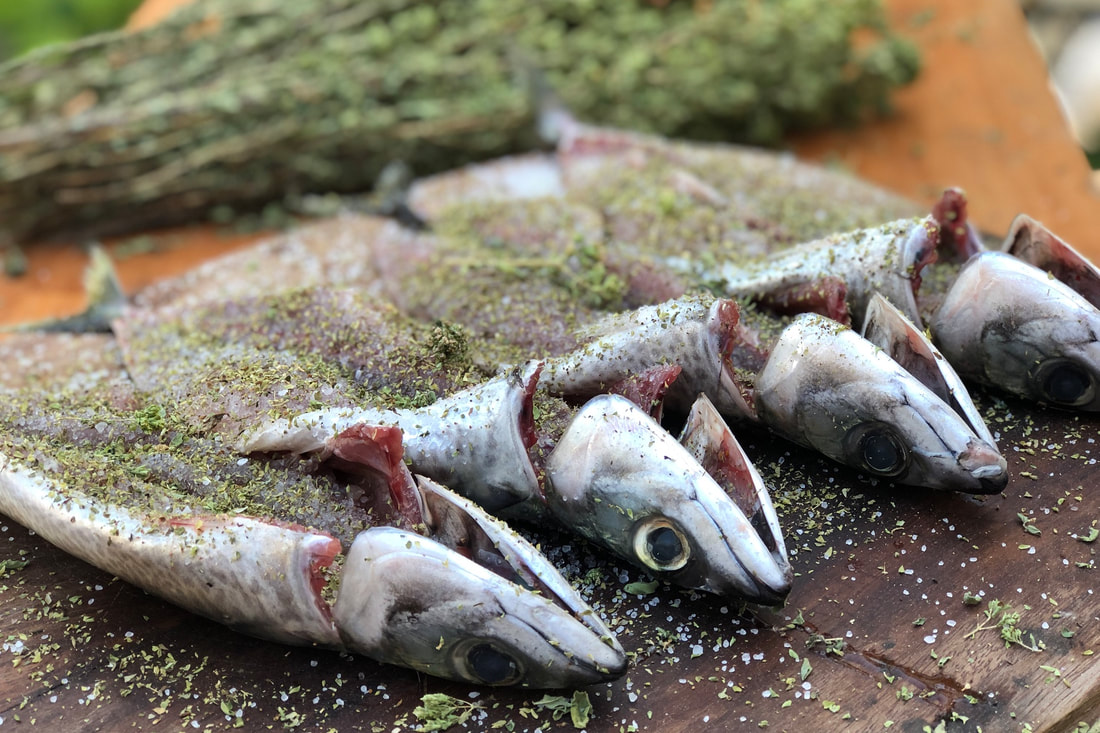
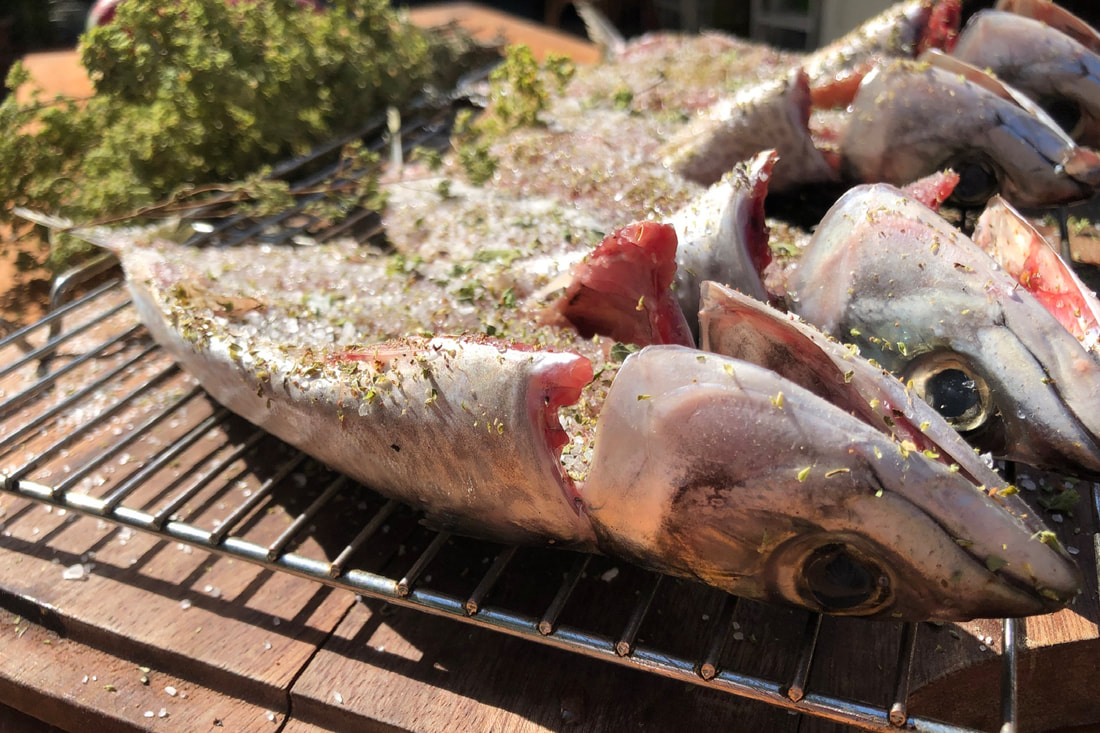
The Experiences
So, I’ll recount the memories as best I can…
Even though I’m older now, I’ve gone back several times and talked again with the local fishermen of Naoussa about it.
And what they told me — almost exactly the same, with only a few small variations — matched what my fisherman friend Kostas had said.
Listen to your fisherman, please — and trust him!
So, the gouna, that classic Parian seafood meze — also known as liasto or liokavto — is made mainly from mackerel, a fairly large one.
It needs to be thick enough so that, after it’s been dried in the sun and later grilled over charcoal, it stays juicy and flavorful.
Of course, gounes can also be made from chub mackerel, horse mackerel, or even small bonito.
In Mesolongi, around the lagoon, they make a similar delicacy called petali, using mullet, which is plentiful there.
But the real thing — the authentic, traditional Parian gouna —
is, without a doubt, made from mackerel.
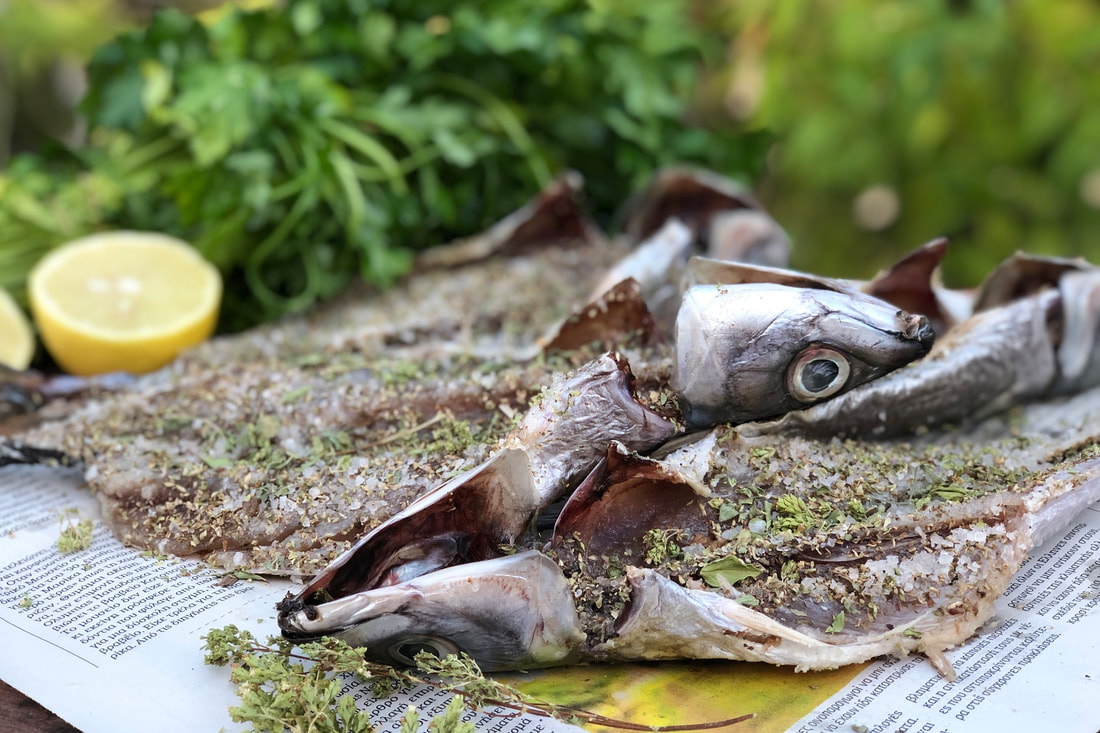
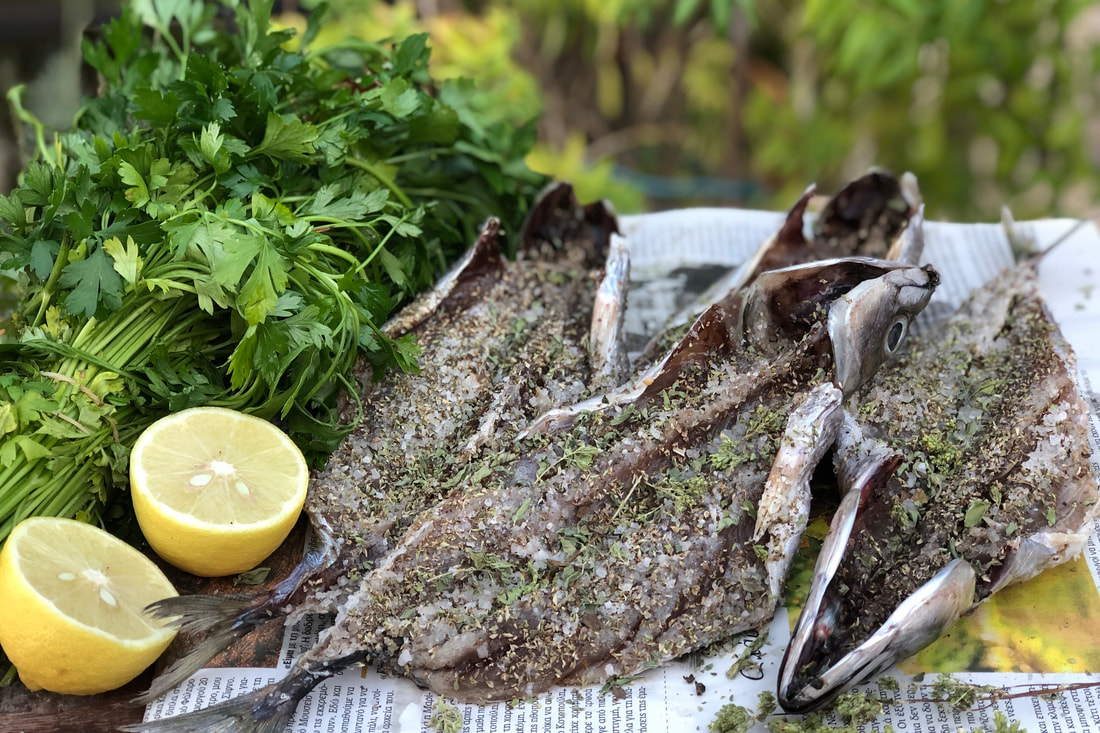
The recipe
So making the Parian fish appetizer at home is a very simple process.
It will delight tsipouro friends since it is considered the ultimate tsipouro appetizer!
Ask your fisherman to clean and open the mackerel for you. If you are not good at surgery, then everything else is a game…
The Parian fish appetizer will only need to be dried on the veranda.
Ingredients
4 mackerel, large.
4 tbsp. coarse salt.
4 tbsp. oregano.
Calculate for each fish, that is, one tablespoon of salt and oregano.
Instructions
Clean the fish well and open them, ideally from the back. Although I believe that opening them from the belly is the same thing.
Contrary to the recipes I read, the central bone remains and we do not remove it. Because it also has its own deliciousness.
The fishermen who clean them by the sea, until they are all cleaned, leave them in the sea water. To draw the sea, as they say…
We spread the fish on newspaper traditionally to drain well. We wipe them to remove the excess water.
Then we salt them well with coarse raw salt on both sides.
Then we add plenty of oregano and we are ready to dry them…
Here you can dry them with the traditional method of spreading them with rope after placing a straw crosswise to keep the fish open.
For convenience, it is spread on the classic oven rack. However, you should turn it every two hours so that it is cooked on both sides.
Let them dry in the sun for about six hours and then move them to the shade for another three hours.
When our fish is dry, but not mushy, they are ready for the coals.
Baking
The Parian gouna, a fish appetizer, also requires special cooking…
We always start cooking with the skin side down and then turn them over.
Be careful not to overcook them, 3-4 minutes on each side is enough to make them crispy on the outside and juicy on the inside.
The cooking time also has to do with the size of the fish, be careful not to dry them out.
The Parian gouna in the taverns in Naoussa is usually served on a platter with plenty of lemon and oregano.
Throumbi, but also a little olive oil and lemon with chopped parsley would be a very good idea…
Unfortunately, when the group for Friday’s ouza saw gouna as an appetizer, they disappeared in the blink of an eye.
As a result, we do not have photos of the final result. But I personally guarantee you that it is the perfect appetizer for your tsipourakia and of course always with select company!
Follow us and Subscribe at Tastelocalgreece on YouTube and discover all our excursions.
Watch the video we made for you. Get a more complete view of this wonderful monument, still unknown to many.
In today’s…
In our time, the need for preservation no longer exists, but the people’s love for authentic traditional flavors is the absolute requirement.
So if you visit Paros and find yourself in the most traditional representative, Naoussa.
You will still find the gouna fish hanging today, the Parian fish appetizer, opposite the octopuses to contradict tradition and taste. Accompanied by the classic frozen souma, the special local tsipouro of the island.
Sit back, relax, gaze at the sea.
Observe the fishermen sitting between the large yellow nets. Hunched, silent, they laboriously mend their nets with inconceivable mastery and speed.
Enjoy a grilled gouna fish over the coals with the grilled octopuses and the soumas.
Close your eyes, listen to the sound of the sea, the smell of the wind and discover the local delicacies, savor a bite of gouna, a sip of souma…
And suddenly you will find yourself somewhere magical…
I guarantee you, there is nothing more magical!
Text and photos by Giorgio Grigor

